Manufacturing a stainless steel water bottle involves raw material costs, labor expenses, production process expenses, quality control expenditures, packaging and shipping fees, as well as overhead and miscellaneous outlays. Raw material pricing is influenced by supplier negotiations and market demand. Labor costs cover wages, benefits, and training. Efficient production processes minimize wastage and enhance cost-effectiveness. Quality control ensures adherence to standards and prevents rework. Packaging customization and eco-friendly options impact production expenses. Shipping fees play a vital role in successful delivery. Overhead expenses, including marketing and promotional costs, are crucial for profitability. Mastering these key areas influences the overall cost of production.
Raw Material Costs
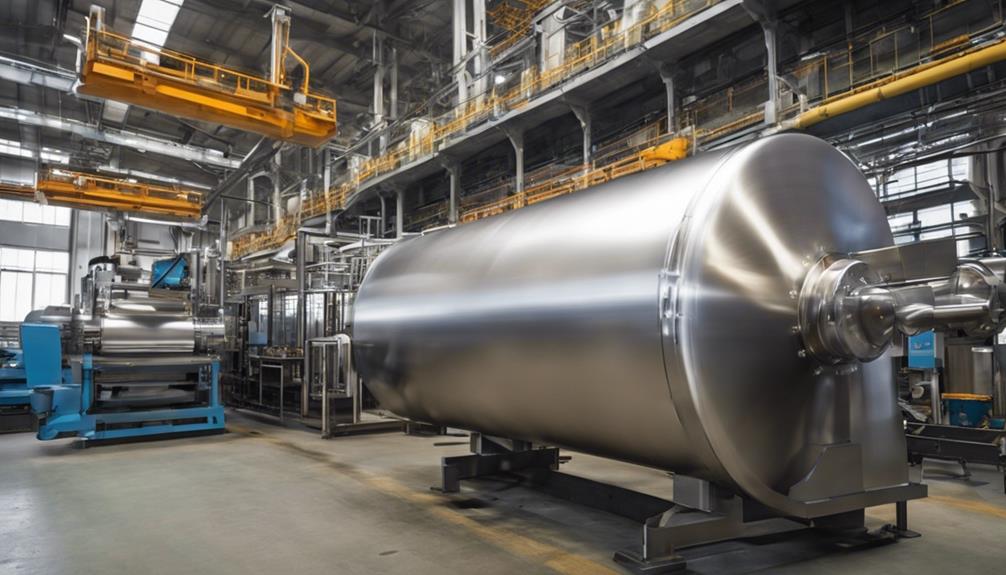
The cost of manufacturing a stainless steel water bottle begins with acquiring the necessary raw materials, which account for a significant portion of the overall production expenses. Supplier negotiations play a crucial role in securing competitive prices for materials, especially considering the variations in material quality and pricing due to market demand. Efficient supplier negotiations can lead to cost savings, impacting the overall production budget positively.
When dealing with raw material costs, it's essential to consider production efficiency. Optimizing the manufacturing process can help reduce wastage and enhance productivity, ultimately lowering the expenses related to raw materials. By streamlining operations and implementing efficient production techniques, manufacturers can effectively manage their material costs while meeting market demands for stainless steel water bottles.
Understanding the dynamics of material variations and market demand is vital in controlling raw material expenses. By staying informed about industry trends and fluctuations in material prices, manufacturers can make informed decisions regarding sourcing materials and adjusting production levels to align with market needs efficiently.
Manufacturing Process Expenses
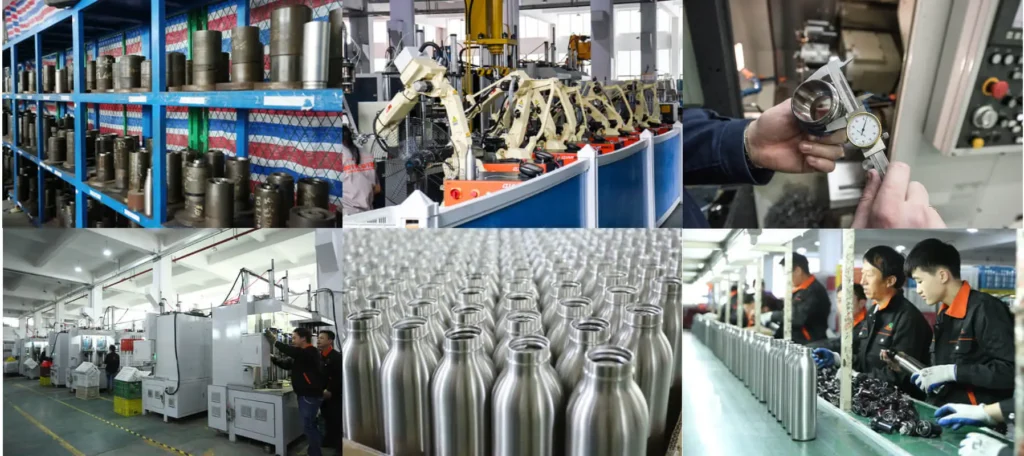
When looking at the manufacturing process expenses of stainless steel water bottles, you need to consider two main points: production material costs and labor along with overhead expenses. These factors play a crucial role in determining the overall cost of manufacturing each bottle.
Understanding and optimizing these expenses are key to effectively managing the production costs of stainless steel water bottles.
Production Material Costs
Considering the intricacies of the manufacturing process, the production material costs play a critical role in determining the overall expenses involved in producing a stainless steel water bottle. To ensure cost efficiency, manufacturers often focus on optimizing production method efficiency and implementing cost-saving measures. Additionally, there is a growing emphasis on environmental impact and sustainability efforts in material selection to align with eco-friendly practices.
The table above outlines the estimated cost per unit for key production materials used in manufacturing a stainless steel water bottle. Stainless steel, the primary material, accounts for a significant portion of the cost. Investing in high-quality materials not only ensures product durability but also aligns with sustainability goals. By balancing cost-effectiveness with environmental consciousness, manufacturers can produce premium stainless steel water bottles that meet both economic and ecological standards.
Labor and Overhead Expenses
How do labor and overhead expenses impact the manufacturing process of stainless steel water bottles?
Labor and overhead expenses play a crucial role in determining the overall cost of producing stainless steel water bottles. Efficiency in production and labor productivity are key factors that can significantly influence these expenses.
Production Efficiency:
Streamlining the manufacturing process to enhance production efficiency can help reduce labor and overhead expenses. By optimizing workflow, eliminating bottlenecks, and improving resource utilization, manufacturers can lower costs associated with labor and overhead.
Labor Productivity:
Maximizing labor productivity through proper training, effective supervision, and incentivization can lead to cost savings in the manufacturing process. When workers are skilled, motivated, and equipped with the right tools, they can complete tasks more efficiently, reducing labor expenses.
Overhead Management:
Controlling overhead costs, such as rent, utilities, and administrative expenses, is essential for cost-effective manufacturing. Implementing cost-saving measures and efficient resource allocation can help mitigate the impact of overhead expenses on the overall production cost of stainless steel water bottles.
Labor and Production Costs
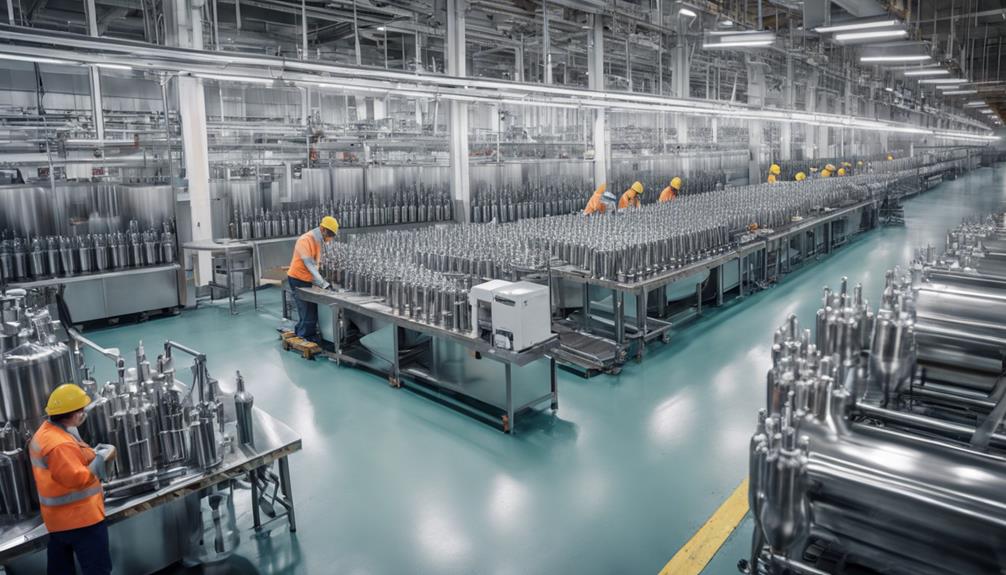
When considering the labor and production costs involved in manufacturing stainless steel water bottles, it's crucial to break down:
Labor expenses, which encompass wages, benefits, and training for workers involved in manufacturing the water bottles.
Production process costs, which involve machinery maintenance, energy consumption, and quality control measures to ensure efficient manufacturing.
Material sourcing expenses, which relate to acquiring high-quality stainless steel, lids, seals, and any additional components needed for the production of the water bottles.
Labor Expenses Breakdown
Analyzing the labor expenses breakdown is crucial for understanding the manufacturing costs associated with producing stainless steel water bottles. When delving into the intricacies of labor costs, several key factors come into play:
- Wage Rates: The wage rates in a particular region greatly impact the overall labor expenses. Understanding the prevailing wage rates in the labor market where the manufacturing facility is located is essential for accurate cost estimation.
- Production Efficiency: Efficient production processes can significantly reduce labor costs. Optimizing production workflows, implementing lean manufacturing principles, and providing adequate training to workers can enhance production efficiency and lower labor expenses.
- Labor Market Dynamics: The dynamics of the labor market, such as availability of skilled labor, unionization, and labor regulations, can influence labor costs. Adapting to the labor market conditions is crucial in managing labor expenses effectively while maintaining production quality.
Analyzing these aspects in the labor expenses breakdown provides valuable insights into the cost structure of manufacturing stainless steel water bottles.
Production Process Costs
Efficiently managing production process costs, which encompass both labor and production expenses, is essential for optimizing the overall manufacturing expenditure of stainless steel water bottles. Energy consumption plays a significant role in production costs, as the manufacturing process of stainless steel bottles requires heating, cooling, and machinery operation. Monitoring and optimizing energy usage through efficient equipment, insulation, and operational practices can lead to substantial cost savings.
Waste management is another critical aspect of production process costs. Proper handling of waste materials generated during manufacturing, such as metal shavings and scraps, is essential to minimize disposal costs and environmental impact. Implementing recycling programs and waste reduction strategies can't only reduce expenses but also enhance the sustainability of the manufacturing process.
Material Sourcing Expenses
Managing material sourcing expenses for stainless steel water bottle production involves meticulous tracking of labor and production costs incurred during the acquisition of raw materials. To optimize these expenses effectively, consider the following key aspects:
- Supplier Negotiations: Engage in strategic discussions with suppliers to secure favorable pricing for raw materials, reducing overall production costs.
- Production Efficiency: Enhance operational efficiency to minimize labor costs associated with material sourcing, ensuring a streamlined production process.
- Material Quality: Prioritize sourcing high-quality stainless steel to avoid potential rework or defects, which can increase expenses and prolong the production timeline.
Quality Control Expenses
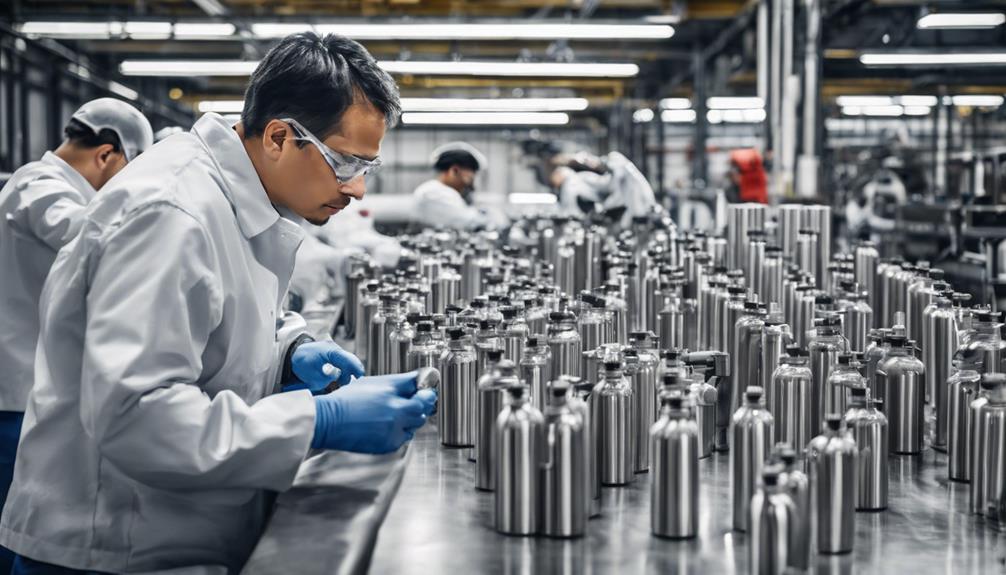
A crucial aspect to consider when determining the cost to manufacture stainless steel water bottles is the allocation of necessary funds for quality control expenses. Supplier audits and inspection costs play a significant role in ensuring that the materials used in production meet the required standards.
By conducting thorough supplier audits and inspections, you can identify any potential issues early on, thus preventing costly rework or product recalls.
Quality assurance is another essential component that incurs expenses. Implementing robust quality assurance processes throughout the manufacturing stages helps maintain consistency and reliability in the final product.
This involves conducting various tests, such as leak tests, durability tests, and safety tests, to guarantee that the stainless steel water bottles meet industry regulations and customer expectations.
Testing expenses, including materials testing, performance testing, and compliance testing, are crucial investments for upholding the quality of the water bottles. By allocating sufficient funds towards quality control measures, you can minimize the risk of defects, improve customer satisfaction, and ultimately enhance the overall reputation of your stainless steel water bottle manufacturing process.
Packaging and Shipping Costs
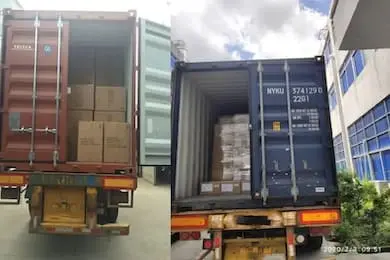
To ensure the successful delivery of your stainless steel water bottles to customers, calculating and budgeting for packaging and shipping costs is imperative in your manufacturing process.
When considering packaging and shipping costs, several factors come into play:
- Design customization options: Offering various design customization options for your packaging can enhance the overall appeal of your product, attracting more customers and potentially increasing sales.
- Environmental impact: Opting for eco-friendly packaging materials can align with consumer preferences for sustainable products, showcasing your brand's commitment to environmental responsibility.
- Branding opportunities: Utilizing packaging as a branding tool can create a lasting impression on customers, reinforcing brand awareness and loyalty.
Frequently Asked Questions
Can I Customize the Design or Engraving on the Stainless Steel Water Bottle?
You can customize the design of a stainless steel water bottle through various options. Engraving details offer a unique touch. Consider the placement, font, and size for a personalized touch. Explore the customization choices available for a bespoke product.
Are There Any Additional Costs for Eco-Friendly or Sustainable Manufacturing Practices?
Embracing green initiatives in production boosts sustainability but may incur slightly higher production costs initially. Utilizing sustainable materials enhances eco-friendliness and requires production efficiency adjustments. These choices reflect a commitment to environmental stewardship.
Do You Offer Bulk Discounts for Large Orders of Stainless Steel Water Bottles?
For bulk orders of stainless steel water bottles, we offer competitive pricing options with significant discounts. Our team ensures efficient shipping logistics to meet your timeline requirements. Contact us for detailed information on pricing and delivery schedules.
What Is the Expected Lifespan or Durability of the Stainless Steel Water Bottle?
The expected lifespan of our stainless steel water bottle is 5 years, thanks to its durable construction. Customization options allow for personal touch. Bulk discounts ensure savings. Rest assured, durability is our top priority.
Are There Any Certifications for the Materials Used in the Manufacturing Process?
When considering material certifications and regulations for stainless steel water bottles, ensure compliance with standards like FDA, LFGB, or BPA-free certifications. Sustainable production methods and eco-friendly options such as recycled steel are essential for environmentally-conscious manufacturing processes.
Conclusion
In conclusion, the cost to manufacture a stainless steel water bottle can vary depending on factors such as:
- Raw material prices
- Manufacturing processes
- Labor costs
- Quality control measures
- Packaging
- Shipping expenses
When all these elements are considered, the total cost can add up significantly.
As the saying goes, 'You get what you pay for,' investing in high-quality materials and production methods may result in a more durable and reliable product in the long run.

